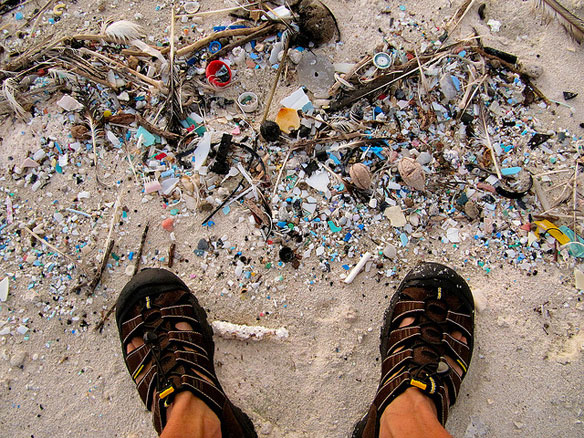
Fragmented plastics on shore, Midway Atoll. Photo source: ©© JanVozenilek / Midway Journey
Abstract; By Environmental Science and Technology
Scientists are reporting that household washing machines seem to be a major source of so-called “microplastic” pollution, bits of polyester and acrylic smaller than the head of a pin, that they now have detected on the shorelines at 18 sites worldwide representing six continents from the poles to the equator, with more material in densely populated areas.
Plastic debris <1 mm (defined here as microplastic) is accumulating in marine habitats. Ingestion of microplastic provides a potential pathway for the transfer of pollutants, monomers, and plastic-additives to organisms with uncertain consequences for their health.
Here, we show that microplastic contaminates the shorelines at 18 sites worldwide representing six continents from the poles to the equator, with more material in densely populated areas, but no clear relationship between the abundance of miocroplastics and the mean size-distribution of natural particulates.
An important source of microplastic appears to be through sewage contaminated by fibers from washing clothes.
Forensic evaluation of microplastic from sediments showed that the proportions of polyester and acrylic fibers used in clothing resembled those found in habitats that receive sewage-discharges and sewage-effluent itself.
Experiments sampling wastewater from domestic washing machines demonstrated that a single garment can produce >1900 fibers per wash. This suggests that a large proportion of microplastic fibers found in the marine environment may be derived from sewage as a consequence of washing of clothes. As the human population grows and people use more synthetic textiles, contamination of habitats and animals by microplastic is likely to increase.









